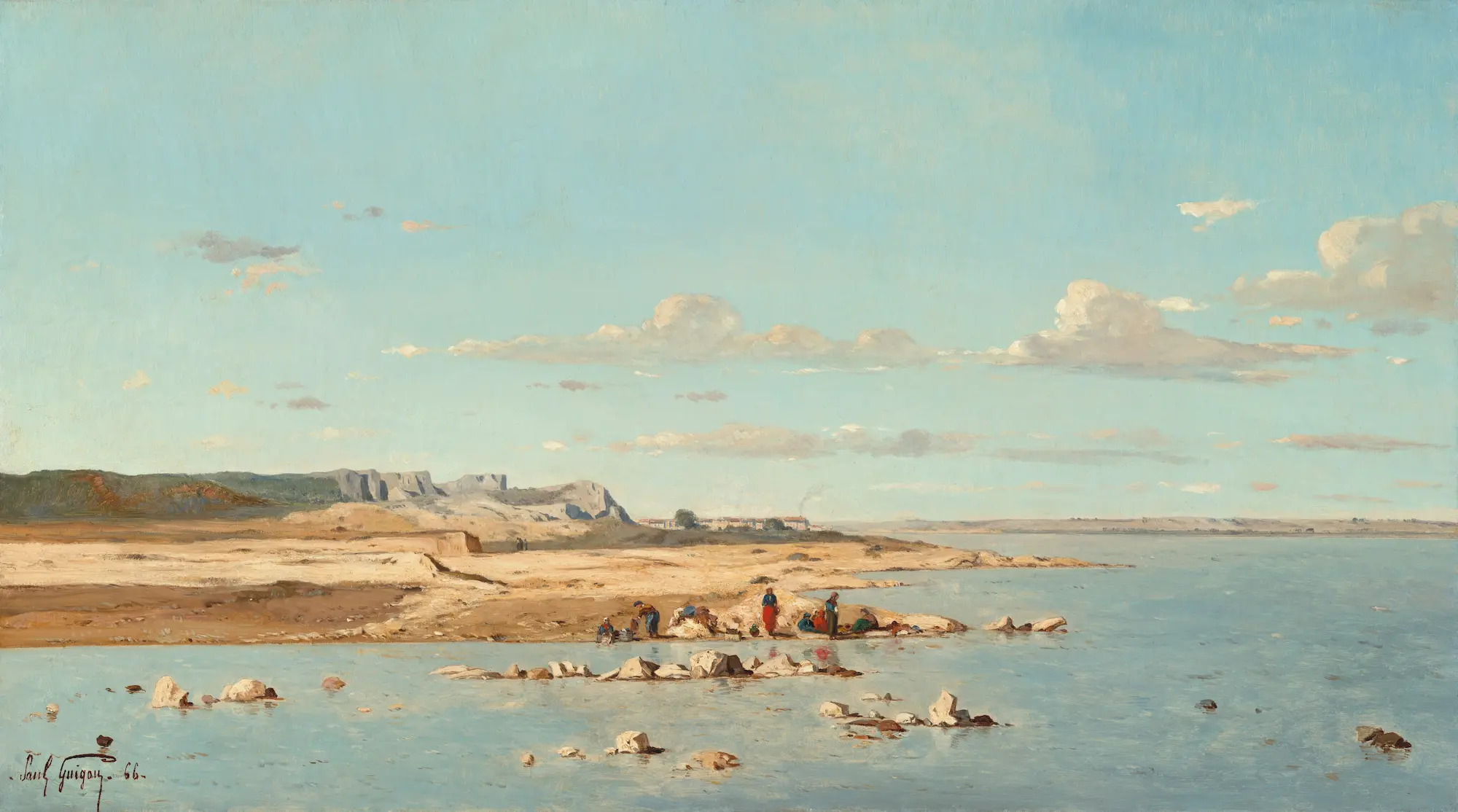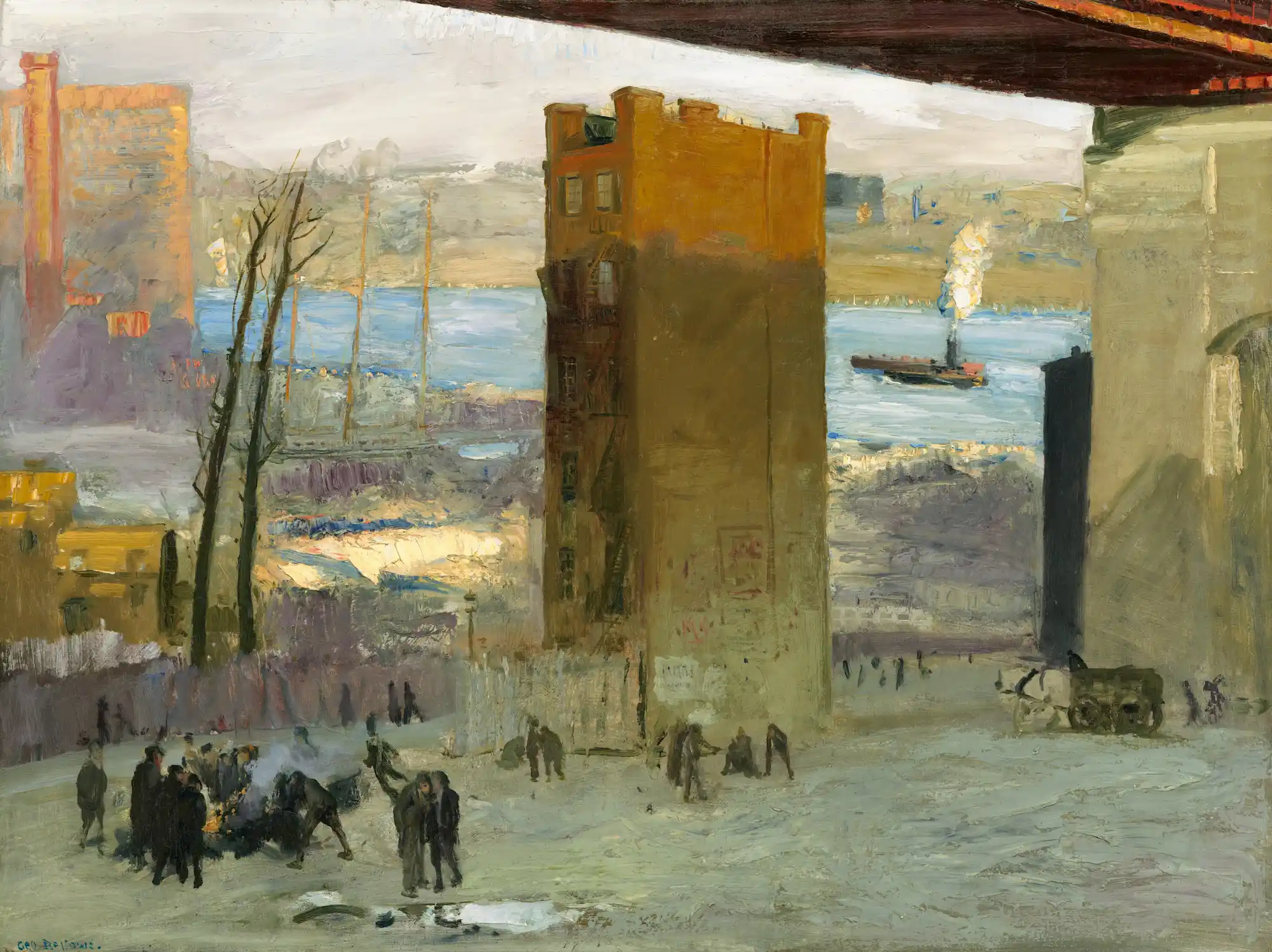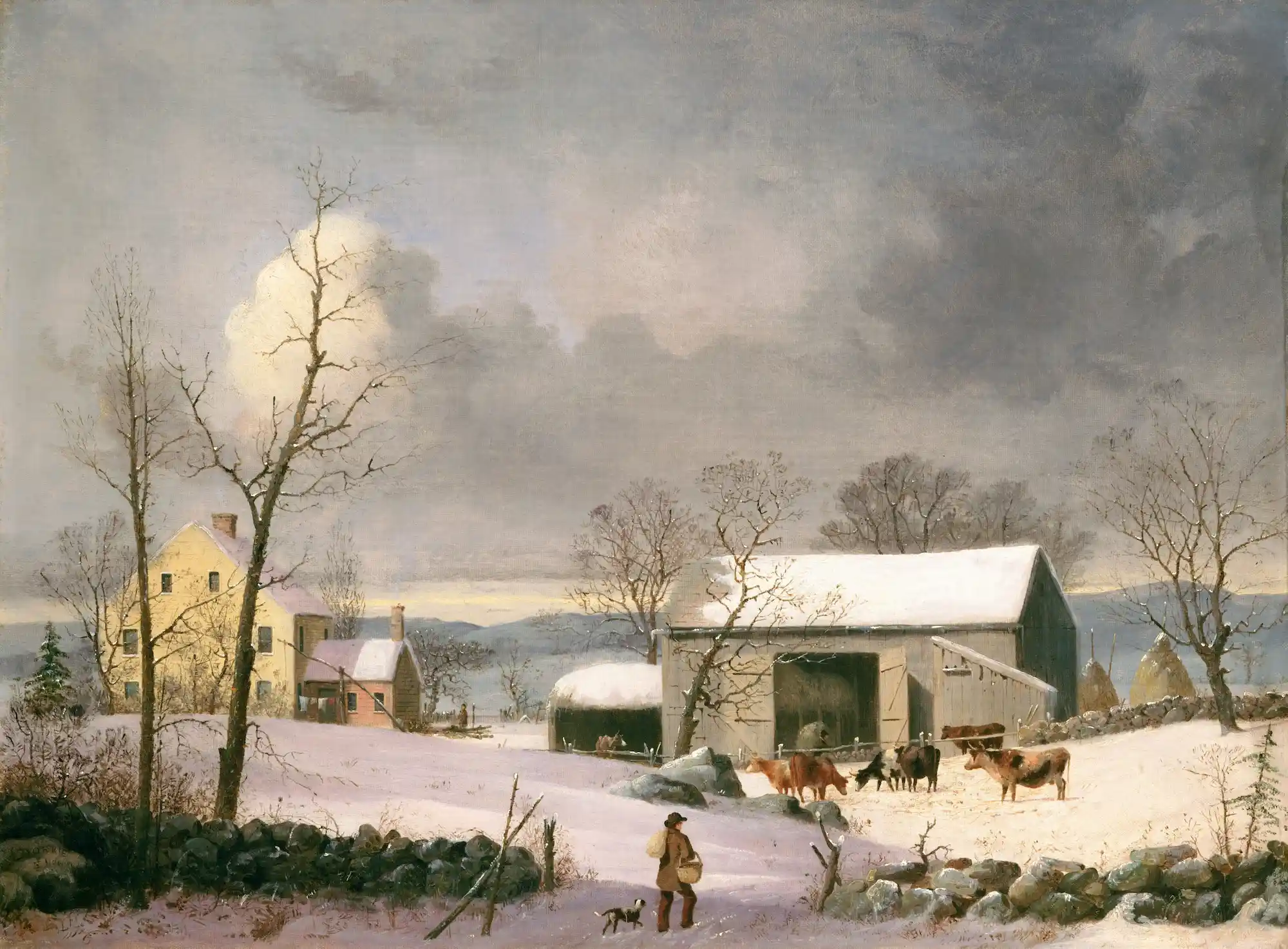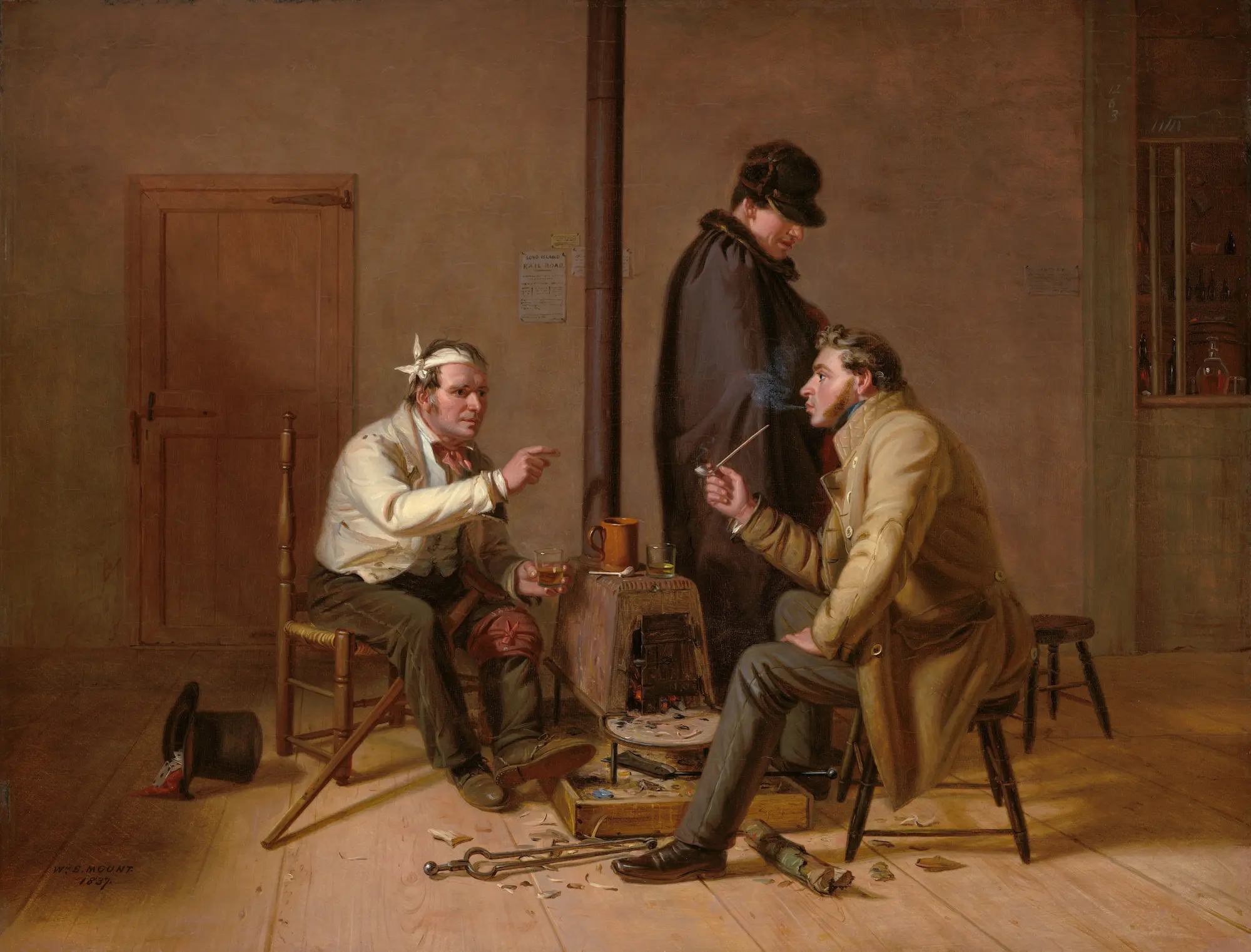
The Houses of Parliament, by Claude Monet
The Longest Minute
Our pediatric hospice team’s new patient was staying in a motel on the west side of the city. His mother, Shania, warned me in a text that we might have to leave the room for mandated housekeeping. She didn’t have a car, and as I turned off the main road down the long driveway, I noticed there was no grocery or pharmacy or park or school within sight, certainly not within walking distance. But on the far side of the motel parking lot, ironically, was a funeral home. We notice these details in the hospice business. Walking by the open doors of vacant rooms as the housekeepers moved in and out, I saw the detritus of the past weekend: pizza boxes, fast-food wrappings, and many beer cans. I wondered how noisy it had been for the family. I climbed the stairs and rapped on the door to room 211, which opened directly onto the balcony overlooking the parking lot.
Shania opened the door and welcomed me in with her soft, lilting Caribbean accent reminiscent of the rhythm of ocean waves; she was trim, of average height, wearing shorts, flip-flops, and a hoodie covering her hair, while a surgical mask covered her mouth and nose. Her two-year old son, Tomi, immediately made a dash toward my legs for a hug, his sturdy arms and legs propelled by toddler energy. Shania settled him on the bed with an electronic game pad. The family took up all the king-sized bed: Tomi and his tablet, Shania and an assortment of unfolded laundry, and Uzziah in his Moses basket; the only chair in the room held clothes and diapers, so I leaned against the dresser, placing my stethoscope and hand sanitizer on the counter. “I know a little about Uzziah from his records,” I began, “but I’d rather hear your story from the beginning. Let’s start with how he came to have the name Uzziah, and then I’d like to understand how you came to give birth here in Houston.”
“Uzziah means ‘the Lord is my strength and power,’ and he was one of the famous Kings of Judah. I wanted to give my baby that strength.” Shania began her saga: in her island country, she learned about her baby’s lethal condition halfway through the pregnancy. Her obstetrician delivered the chilling news bluntly, “There’s nothing we can do for him here. You should consider termination. If he doesn’t die during pregnancy, he will die within minutes after birth.”
“How could I terminate?” She asked me. “His heartbeat was strong, and he was growing.”
Shania came to the USA, to the city where her brother lived, for a second opinion; surely in a major medical center, she told me, the doctors could do something for the baby. Having family nearby was helpful, and through her brother and his church, she met several women who offered to help with Tomi at the time of delivery. Her husband had not been able to come with her because of his job. Nor could he care for their two-year old, so Shania brought Tomi along. I can only imagine what that must have been like during the COVID-related visitor restrictions in hospitals and doctor’s offices. A friend would take Shania to her appointments and keep Tomi, then return at the end of the day to pick her up; the hospital was thirty miles each way from where she was staying. The obstetrician confirmed Uzziah’s chromosomal anomaly at Shania’s first visit and repeated what she had previously learned about the diagnosis: profound developmental delay, heart problems, seizures……if he even survived birth. Finally, Shania told me, she agreed with the doctor’s recommendation to focus on Uzziah’s comfort rather than on resuscitating him after birth, because “doing things to him would not be helpful.”
Shania went into labor at term and sure enough, within minutes after delivery, Uzziah’s heart rate plummeted. The nurse practitioner in the delivery room asked Shania what she wanted them to do. “Just put him on my chest,” she told her. They did so, expecting Uzziah to pass quickly. But the warmth of her body and the rhythm of her heart must have been just the medicine Uzziah needed because he perked up and began breathing rhythmically. That’s when the hospital called our hospice: Shania was a charity case. The hospital wanted to discharge her quickly and planned for her release the next morning.
The housekeeper arrived in the middle of Shania’s story, so we decamped to the stairs at the end of the building, sitting awkwardly on the hard concrete: Tomi and his game pad, Shania carrying Uzziah in his Moses basket, and me.
“May I hold him while we visit?” I asked. “I need a baby snuggle.”
“You are the first person who’s asked to hold him,” she responded, as she handed him over.
“I’m the baby whisperer: I love to hold my little ones.”
What I didn’t tell Shania is how critical I think it is for parents to see me holding their babies, especially the infants with birth defects who might not represent the traditional view of a beautiful, perfect newborn. That explicit lesson I save for young doctors in training. I’ve always felt that holding the baby offers a powerful message of love and acceptance to a mother who has only heard bad news about her baby and his future: all about what’s wrong with him, and nothing about what’s right with him.
As my fellow pediatricians might describe him, Uzziah was a little snuggle-bunny. If you didn’t know better, you might have thought he was simply small for a full-term infant. He’d fuss every few minutes and I’d stroke his face with my finger, top to bottom, along the magic spot in front of his ear. “Slow and easy,” I demonstrated to Shania, and Uzziah settled each time. fingers overlapped in a manner almost diagnostic for his diagnosis. How is it that having three copies of one chromosome makes a baby’s fingers overlap? How can we explain that? Another tiny mystery we do not yet understand. As I was examining Uzziah, Shania chatted: about her husband, about her job as a professional diver, about her hope that she could take Uzziah home—if only his birth certificate and passport would arrive quickly. I told Shania I had cared for more than eighty babies with Uzziah’s diagnosis in hospice care, and in fact—I had five babies with his condition living with their families currently. She asked several thoughtful questions, thrilled to know that some of these infants live longer than predicted.
“You know it’s not up to me to know how long he will live, but I promise to let you know if I see signs that his life is ending. Oftentimes, though, the baby doesn’t give us a warning, so I’d encourage you to enjoy every day you have with him, take lots of pictures, and let Tomi get to know his baby brother. Together, we’re going to feed him, love him, and focus on his comfort. I will do whatever I can to help you get home.”
Shania cocked her head toward the room. “The housekeeper just finished.”
“Well, as much as I love holding him, I’ll give him back so we can finish up in the room. Here’s my professional opinion on Uzziah: I think he’s adorable.”
Her face visibly relaxed as a broad smile opened under her mask, her eyes crinkling in the corners. “Thank you, doctor. You’ve made me feel much better, more hopeful now.”
We made our way to the room, fresh-smelling and clean. I finished my exam, measuring Uzziah’s head circumference and listening to his heart again, then reviewed with Shania how to contact our team after hours. I told her I would be talking with our social worker about facilitating Uzziah’s passport. And then I received one more full-body hug from Tomi to cap off my trip.
As I drove back toward the medical center, I thought about my conversation with Shania: I agree with giving parents complete and accurate information about our concerns for their infants. However, we physicians are considerably less accurate in our predictions for immediate death after delivery than we’d like to admit—and every time we are wrong and the baby lives longer than expected—we create new stresses for parents. Parents live with constant anxiety of wondering whether today their baby will die; they worry about not being present when their infant takes his last breath. They wonder if they should go back to work.
The question about miracles always comes up in these situations, too. Extended families may have been praying throughout the pregnancy, for God to heal the baby. They believe He can “fix” any diseases or anomalies, and they fervently hope He chooses a healthy life for their baby. I’ve heard parents express their hope that the doctors were wrong, no matter how many times the chromosomes have been checked, no matter how many ultrasounds and MRI scans have been completed, all showing the same result. We physicians think we know “everything” about the baby from our sophisticated studies; but for many parents, the prenatal diagnosis is merely a mirage, until the baby arrives and is examined by experts. I’ve often heard from parents their whispered hopes that the fatal diagnosis is a bad dream from which they will awaken when a healthy baby arrives.
Instead of focusing only on the birth defects and concerns we have for the baby’s survival—could we instead, please acknowledge and celebrate what is miraculous and beloved about each baby? Could we please honor his name, his family, and his heritage while he is here with us? And could we please reserve space in conversations for hope? We don’t need to overwhelm parents with bad news: even knowing what we know, we must still let the baby lead the way.
Early in the morning, only five days later, Shania called our emergency line to report Uzziah had stopped breathing, then breathed again when she flicked his foot. By the time the night nurse arrived to check on him, Uzziah had stopped breathing two more times. Shania had gone so far as to take an Uber toward a nearby hospital, but she did not enter the building, realizing treatment would be futile. Instead, she returned to the motel. I called to talk with her, letting her know I was concerned that Uzziah was trying to leave us, and I answered her questions about what to do next to assure his comfort. Later that morning, the sequence repeated: Uzziah stopped breathing, looked “dark” to Shania, then finally began breathing again. Our day nurse, Ada, went to visit and reported Uzziah was blue and listless. Shania told Ada she didn’t think she could do “this” in the motel room by herself. Ada called and asked me if we could transfer Uzziah to our inpatient unit so Shania would have more support. I was in favor of transfer, but first, we needed her to sign an Out-Of-Hospital DNR (do not resuscitate) document for the ambulance transport, assuming Shania still agreed to focus on Uzziah’s comfort. She signed the document, and I was relieved.
If Shania wanted to remain in the motel with her boys, we would have supported that choice too, but I was thinking ahead about what that scene might look like if the baby died and we didn’t have the OOH-DNR signed. Even if he died hours before our staff arrived to pronounce him, the law requires us to call 9-1-1 for a resuscitation attempt by paramedics. A fire truck, an ambulance, and a flock of police cars would have filled the parking lot with a report of a dead baby. Officers would have clustered like seagulls at a beach picnic. And I’m going to say this out loud: with or without an OOH-DNR document, a Black mother with a dead baby in a motel ….. somehow, her room would have been turned into a presumptive crime scene, even if our staff were there to advocate for her. I didn’t want that for Shania, Tomi, or Uzziah.
After calls to her mother and husband, Shania agreed to come downtown to our hospice unit. Shania waited for another friend to pick up Tomi, so it was nearly three hours later when she arrived.
The Charge Nurse, Deana, said she saw Uzziah take one single breath after his arrival, but she never heard a heartbeat. When Deana told Shania that Uzziah was dead, Shania immediately began doing chest compressions and breathing into his mouth. Knowing Shania had signed the Do-Not-resuscitate document, Deana called me for guidance. After we talked for a moment—Shania stopped compressions long enough to speak to me on Deana’s mobile. “Shania, do you want to go back to the hospital for resuscitation? We are here to support any decision you make. Please tell me what you want. We can call an ambulance to pick up Uzziah if that is what you want.”
“I don’t know, Doctor,” she said, “my husband wants me to go to the hospital, but you told me the doctors there can’t help him, and I believe you.” She handed the phone back to Deana and resumed chest compressions.
I knew that her resuscitation efforts were futile and that further efforts at the hospital would be futile, too: Uzziah’s heart was a one-room cavern with no walls or doors, instead of a four-room apartment. Going to the hospital would only separate Shania from Uzziah at the time of his death. Still, I asked myself whether going to the hospital would prevent Shania from feeling guilty about his death later. Would watching CPR in the Emergency Room have helped Shania feel she had done everything possible for Uzziah? I considered the ramifications of both courses of action, but I still couldn’t—in good conscience—recommend taking Uzziah to the hospital. Shania asked Deana if I was coming to the hospice unit to pronounce him. So I quickly drove to the unit, ran up the back stairs, and entered the darkened room to see Shania sitting on the bed, her right leg curled under her body, her left leg hanging over the edge, leaning forward and trying to breathe life into her baby’s mouth, then squeezing his ribs in an attempt to jumpstart his heart. Watching her efforts, I felt Shania knew he was dead already, but she simply couldn’t admit to herself his life had ended. She took her hands off his chest when she realized I was there, and I laid my stethoscope on his chest for what felt like the longest minute of my recent life. From his color, I could already tell that Uzziah had been dead for some time. I knew he wasn’t coming back.
I told Shania that Uzziah was dead; she nodded, her body motionless, quiet, composed. “I’ll give you some time alone with him, then come back in a few minutes to help you with next steps.” I walked back to the nurse’s station to give Deana the time of death, just as we began to hear loud wailing coming from Uzziah’s room. We discussed the mandated call to the Medical Examiner and about asking the weekend social worker to come in to support Shania and help her with funeral plans.
And then we talked about how each of these infant deaths is so difficult, so draining on us all. The death of hopes and dreams for a much-loved baby. And this death, in particular, felt heavier than most to me: Uzziah’s mother so far from home, separated from her husband and her mother, to walk these next steps alone.
I can’t unsee the sight of this loving mother bent over Uzziah’s tiny body, performing chest compressions, trying to breathe life into his mouth—an expression of such desperation—my own breath felt strangled in the back of my throat. Had I created false hope for Shania that Uzziah might thrive to return home? Had I increased Shania’s trauma by refusing to reinforce the gloom-and-doom prognosis for Uzziah? Had I offered the right advice to help Shania absorb the loss of her baby, or did I allow my perspective on the futility of resuscitation to influence her decisions? Or was the timing of his death simply nature’s cruel fate, written in the stars from the moment of his conception? Even days later, when I signed his death certificate, I still believed that my recommendations to Shania were based on what was kindest for Uzziah: he died in his mother’s arms, never separated from her touch.
Facing these difficult situations with parents of newborns with lethal conditions, it’s important to listen to them express their hopes and values as they navigate possible treatment avenues. Open, non-judgmental discussions help couples articulate the values that guide them. I try to be realistic about likely outcomes of one option for care versus another, and I frequently remind them that just because we can offer a specific intervention—like heart surgery—doesn’t mean it will help their baby. I try to help them understand the difference between prolonging life and prolonging death. And I never talk about withdrawing care—that language can be so hurtful—although we may discuss redirecting care to focus on comfort over cure.
Shania’s friends gathered to support her and help her with funeral plans. By the time the funeral director arrived, Shania had regained her composure. Deana and I helped her bathe and dress Uzziah one last time, wrapping his tiny body in a receiving blanket. Then we accompanied Shania down the elevator and walked with her down the long hall to the exit where the funeral home’s vehicle was parked. Deana and I have done this walk with families so many times, but—there was still no way to prepare ourselves to witness the final good-bye as Shania handed her precious bundle to the funeral director.
February 25, 2024
About the writer
Dr. Nancy Glass has been published in Intima: A Journal of Narrative Medicine, in Pulse: Voices from the Heart of Medicine, in Medicine and Meaning, in Medical Literary Messenger, and in Amaranth. An upcoming essay will appear in Persimmon Tree. She won the 2022 Writer’s League of Texas Manuscript Contest in Nonfiction. After forty years practicing pediatric critical care, anesthesiology and pain medicine, and pediatric hospice care, she retired as Distinguished Emeritus Professor of Pediatrics at Baylor College of Medicine in 2022. She received her MFA in Writing from Vermont College of Fine Arts in January 2023.
Further considerations

Pray at the Altar of Delusion and Haiku Suite on the Nine Muses
Look upon the simple life tinged by shades of emotions, all // of it a facade to entertain one’s own delusions.

Someone Else's Grief and Job Before the Job
By Ace Boggess
I’ve never walked in driving rain // as she does now, the noise so sudden & // vast as to become its own silence.

